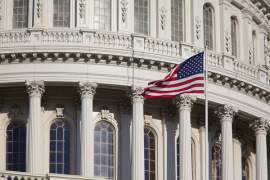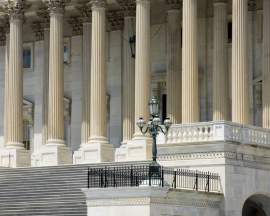
Who Is Earl Warren

Popular In Constitution
Purpose Of Lifetime Appointment And Pros And Cons Enumerated Powers Bicameral Legislature Background Article 3 Of The Constitution We The People 1st Amendment Who Wrote The Constitution Judicial Review Equal Protection Clause Three Fifths Compromise 10th Amendment 5th Amendment
Earl Warren was the only political officer to be elected Governor of California three times. He also served as the 14th Chief Justice to the United States Supreme Court. Like many other politicians, his career started in the field of law as Attorney General of California. When the United States entered World War I, he stepped up to be drafted three times before being accepted , entering the Army as an officer.
Upon his return to Chicago, Earl Warren joined the Alameda County District Attorney’s office as a Deputy District Attorney. He continued as District Attorney until he became Governor of California in 1942. Earl Warren served as Governor until 1953, when he was appointed as Chief Justice to the Supreme Court.
As Chief Justice, Warren's first major case would disclose his views on the many issues regarding equality and racial segregation. Earl Warren's first case was Brown v. Board of Education. This case argued the presence of segregation between white and African American children in public schools. The argument was that the segregation denied African American children the right of equal protection under the Fourteenth Amendment. Some individuals argued it was unlawful for the children to be segregated even though all main facilities were equal in separation.
It was not in Earl Warren’s plan to legalize desegregation. In his opinion legalization of desegregation was not allowed. When the Chief Justice was presented with this case he spent a great amount of time looking for a unanimous ruling of opposition. The Courts held off for a year with the ruling of the Brown case and delivered a ruling approving equality in the school systems in 1955.
It was believed that his hesitation in ruling on the Brown v. Board of Education case was based on the views felt by the people in fellow comrades. He was a very popular Governor when he was appointed Chief Justice of the Supreme Court by Eisenhower. It has been said that later Eisenhower regretted his choice since his belief was that Earl Warren would be a moderate conservative. The view of a modern conservative is that they hold true to the values of traditional beliefs. This would include excluding certain groups who did not conform or pertain to those guidelines. However, the rulings of Earl Warren proved him to be an unabashed liberal, meaning he showed no restraints regarding his liberal views.
Warren extended his liberal beliefs into the world of criminal justice. It was his belief that police officers play fair during investigation or certain cases would be dismissed, letting the accused walk freely. This was documented in the Gideon v. Wainwright trial, where prosecutors were prohibited from using any evidence gained from an illegal search.
It was Warren's determination to apply fair rights of trials even for those persons held under accusations.The liberalist beliefs of Chief Justice Earl Warren also extended into the First Amendment prohibiting mandatory school prayer, keeping consistent with the Constitution’s implication of free speech.
Although Chief Justice Warren was appointed with the belief that he would ensure and protect conservative views, many of the rulings he presided over encouraged liberal beliefs. His rulings paved the way of fair treatment for minorities. Earl Warren also enforced laws that governed the operations of police officials and set practices to ensure the accused were treated fairly.
NEXT: Who Is Melville Fuller





















